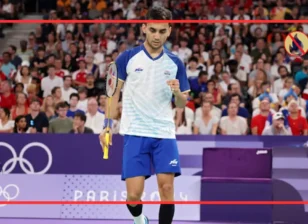Why Did Inequality Exist In France?
A great deal of work has been done on income inequality in France, highlighting the complex interactions between many causes. Understanding long-run trends becomes crucial in the context of economic growth, distributional national accounts, and the subtleties of the gender gap. During the “Thirty Glorious Years,” the dynamics of the top 10%, middle 40%, and bottom 50% of income distribution interacted in a sophisticated way. Methodological techniques provide detailed insights into the intricate network of inequality, such as administrative tax records, national accounts, and survey data.
Analyzing homogenous annual series and pre-tax income in conjunction with top income series and macro aggregates sheds light on the complex long-term development from 1900 to 2014. The reconstruction period’s average income, growth rates, and share distribution can be used to understand how wealth concentration increased and wage disparity contracted.
Examining the intricacies of inequality highlights the ascent of the highest capital and labor earnings, the income share of the top 1%, and the complex development of the capital share. It is impacted by institutional elements such as corporate governance, the diminishing power of unions, and the highest income tax rates. An analysis of gender inequality also emphasizes how the gender gap is closing, questions the patriarchal model, and shows how working women’s dynamics are changing across age groups.
Historical Context: The Thirty Glorious Years and Beyond
After World War II, France went through the “Thirty Glorious Years,” a period of strong economic expansion and profound social change. Redistributive policies were put into place during this time, which helped to reduce wage disparity and provide a more equitable allocation of wealth. The trajectory of income distribution did, however, gradually change during the ensuing decades, increasing wealth concentration and top income percentages. The post-World War II reconstruction phase established the foundation for the subsequent decades’ changes in France’s income dynamics.
Long-Run Evolution: Tracing the Path of Income Dynamics
A detailed analysis of France’s average income, growth rates, and share distribution between 1900 and 2014 reveals these complex trends. The research of top income series and various macro aggregates provided insight into the evolving structure of the French economy. Notably, changes in the capital share and the development in wealth concentration influenced the income distribution and contributed to the formation of distinct socioeconomic classes. Different stages of economic success and hardship were experienced during this time, as seen by the subtle changes in patterns of income distribution.
Inequality Dynamics: Unraveling Institutional Factors
The underlying institutional reasons impacting income inequality are highlighted by the steady rise in top capital and labor earnings and the changing dynamics of the top 1% income share. The distribution of income in France was mostly shaped by changes in business governance. The demise of unions, and variations in the highest income tax rate. Over time, the persistence of income inequality was facilitated by the complex web of socio-economic stratification that was generated by these institutional dynamics and variations in the capital share.
Methodological Approaches: Insights from Comprehensive Data Analysis
Scholars have utilized various analytical techniques, including administrative tax records, national accounts, survey data, and tax data, to analyze income disparity in French society. Homogeneous annual series and pre-tax income analysis have enabled a more comprehensive understanding of income dynamics. It provides insights into the fundamental processes causing income disparity.
Gender Inequality: The Persistent Struggle for Equitable Representation
Even though France has seen a decrease in the gender gap and an increase in the proportion of women in the labor force over time, there are still ongoing issues with tackling gender inequality. The allocation of promotions and higher-paying jobs is still influenced by the patriarchal model. It also contributes to differences in the percentage of women in the top labor income bracket. Examining the gender gap by age group highlights the necessity of ongoing initiatives to advance gender parity and guarantee fair representation in the labor sector.
Conclusion
To sum up, the complex interaction of historical, economic, and institutional elements is reflected in the varied structure of income disparity in France. The intricacy of this issue is shown by the long-term patterns, methodological approaches, and gender gap dynamics, underscoring the necessity of comprehensive policy measures and institutional reforms. It is possible for France to work towards a more just and equitable socioeconomic environment that will support sustainable development. The well-being of society for everyone by tackling structural inequities and encouraging inclusive growth.





